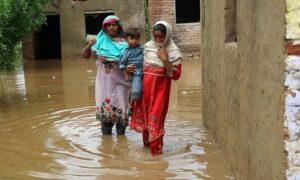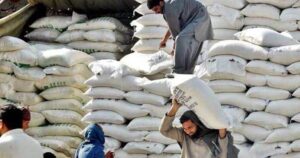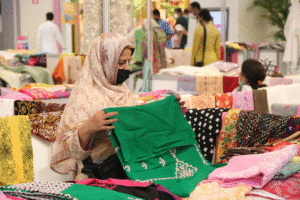PESHAWAR: As the world’s population continues to rise, the issue of rising population and resource scarcity has never been more pressing. With projections estimating 9.7 billion people by 2050, the consequences of this surge are far-reaching. From healthcare and education to clean water and food supply, this growing imbalance demands immediate attention.
In 1987, humanity crossed a significant milestone when the global population surpassed five billion. The United Nations swiftly turned its attention to this escalating concern. Today, the world’s population stands at 7.87 billion, and by 2030, it is expected to reach 8.5 billion. By 2050, that number could climb to 9.7 billion, and by 2100, we could see a staggering 10.9 billion people.
Amid this population boom, Pakistan remains the fifth-largest country by population, with over 220 million people.
Read More: Decline of Sugarcane and Beet in Khyber Pakhtunkhwa
The implications of rising population and resource scarcity are vast. Economic development, job creation, and equitable access to resources such as healthcare, education, and clean water will all face mounting challenges. Pakistan, like many nations, grapples with the effects of a rapidly expanding population. One-third of its people live below the poverty line, while nearly half face food insecurity. The growing population strains public services, and it’s clear that unless significant action is taken, these issues will worsen.
What’s more concerning is the imbalance between population growth and available resources. If current trends persist, by 2050, Pakistan’s population could surpass 350 million, significantly exacerbating the strain on the country’s infrastructure. With resources like clean water, healthcare, and education already in limited supply, rising population and resource scarcity threaten the well-being of future generations.
Read More: Pakistan’s Water Reserves Drop to Critical Levels Amid Dry Winter
Yet, despite these challenges, there is hope. Pakistan’s youth—over 60% of the population is under the age of 30—represents a potential force for change. If provided with the right resources, education, and opportunities, these young people can drive the country’s development and help address the challenges of rising population and resource scarcity. By prioritizing policies that balance population growth with resource management, Pakistan and other nations can work toward ensuring that future generations have access to the essentials needed for a dignified life.
The key to overcoming the challenges posed by rising population and resource scarcity lies in thoughtful, sustainable planning. By optimizing resource use, investing in education and healthcare, and ensuring equitable access to essentials, we can start to address the imbalance between population and resources. But the window for action is closing rapidly. The need for immediate, coordinated efforts to tackle these issues is urgent—because the longer we wait, the harder it will be to reverse the effects of an unsustainable population growth rate.
Read More: Flooded Lands, Struggling Farmers: Charsadda’s Agricultural Challenge
As we look toward the future, the question is not whether we can tackle rising population and resource scarcity, but whether we will act in time. Sustainable development and equitable resource distribution must be our priorities. The time to act is now.












